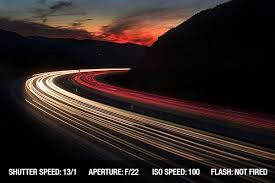One of the key concepts in photography is exposure. It is she who, together with the diaphragm, “decides” how much light will fall into the camera and what our frame will be: dark, overexposed, or correctly exposed. What is camera shutter speed? This is the time during which the camera shutter remains open, allowing light to pass through the matrix. Since the shutter speed is responsible not only for the transmission of light, but along with the aperture, it cannot be said that it determines what the image should be like, but a lot depends on it. For example, it is impossible to catch an interesting phase of motion at a slow shutter speed. Conversely, if you shoot with a slow shutter speed in low light, the image will be too dark. How to set the shutter speed on the camera? Automatic camera modes do not allow the photographer to control the setting of the desired shooting parameters, but in manual mode (M) or in shutter priority mode, this is easy. It is available on the Canon 600d, Canon 1100d, Canon 60d, Canon 50d, Canon 550d, Nikon d3100, Nikon d5100, Nikon d90, and many other SLR cameras. This mode for the Canon camera is indicated by the letters Tv . Nikon camera shutter priority (including cameras and other brands) is denoted by the S . If the shutter speed of the camera shutter is more important for a specific frame than the depth of field, then you need to choose this mode. In order for the image to not blur, you need to remember that you can shoot with your hands (that is, without a tripod or emphasis) with a shutter speed value of no more than 1/40 second (that is, values ??of 1/30, 1/15 and more already give the risk of getting fuzzy photo). If the subject is moving, then you need to “ask” the shutter to work even faster - it is better if it is a value from 1/125 (1/250, 1/500 and less). These are approximate values, since the minimum possible shutter speed for sharp shooting also depends on what focal length you have chosen. The longer the zoom, the more difficult it is to keep it stationary, which means that you will have to make the shutter speed shorter at a large focal length. At slow shutter speeds it’s good to shoot in low light - if the subject is motionless or, on the contrary, you need to show the movement “from and to” (for example, the trajectory of the rotation of stars or the movement of cars with lighted lights). You can get an interesting result by shooting at a slow shutter speed with a flash (for example, with flash sync on the second curtain). At very short shutter speeds, you can shoot only with sufficient light - otherwise the image runs the risk of being darkened. Filmed so unusual moments of movement - and live models, and not only look very impressive: for example, water splashes, moving vehicles, emotions, etc.
What is exposure and why is it needed: get acquainted with the concept of exposure


